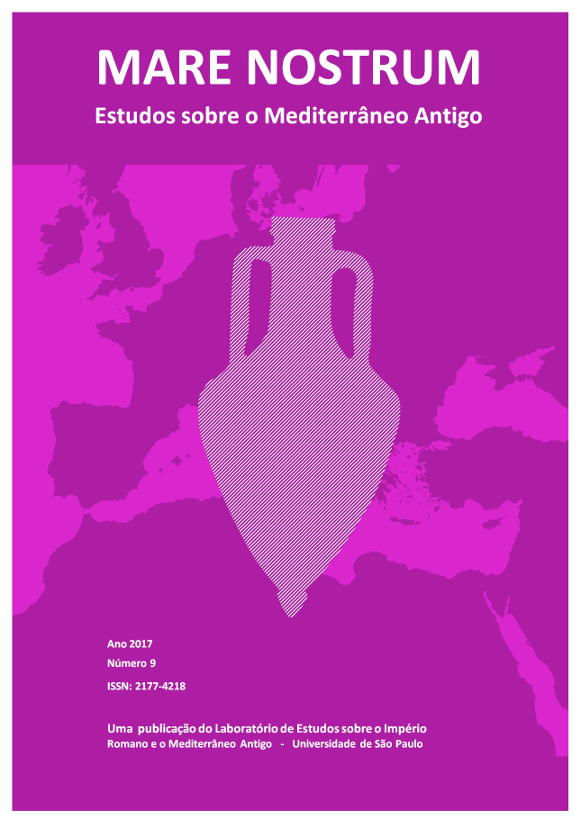The Terra Sigilata Africana in Recent Studies Scenario: Production, Circulation and Port Structures
DOI:
https://doi.org/10.11606/issn.2177-4218.v8i9p38-68Keywords:
North African pottery, Production, Commercialization, Circulation, Archaeometric studies, Artificial port structuresAbstract
The African Terra Sigillata (ARSW), produced since the end of the Ist century A.D., reached great importance from the IIIth-IVth centuries A.D. In the version of high quality tableware and lamps, it was distributed both regionally and through well-established trade routes in the Mediterranean basin.Recent studies on production, dating and distribution go through numerous discussions and reviews of the main Mediterranean ceramic assemblies, with a view to solving typology and chronology problems in addition to the location of production centers. This line of research leads to the interpretation of the role of sigillata ceramics associated with the production and consumption of African food products, such as wheat, olive oil, wine and fish brine (salsamenta, garum). As a result, there is a wide range of researches calling attention to the limits of classical models of African ceramics by offering accurate reviews of dating, origin and content of vessels, especially with archaeometric methods. New issues and difficulties are faced in order to explain the methods of production and commercialization of sigillata and African amphorae in the Mediterranean, having as an important element the African domestic market, with food products of exclusive regional circulation associated with vessels and amphorae with local typologies. These questions intertwine with and converge to the problem of the port structure necessary for the flow of African production. Introductory studies evaluate ship flows and suggest their routes in the Mediterranean basin, however, relevant researches in this context reveal the role of artificial ports. Although this evidence was neglected for a long time, it has been now demonstrated that artificial ports were not only the overwhelming majority but also determinant in the context in which relations between connectivity and economic activities in the Late Roman Period were carried out.The article offers an overview of this debate.Downloads
Download data is not yet available.
Downloads
Published
2018-02-15
Issue
Section
Articles
License
Responsibility for the content published by Mare Nostrum rests exclusively with the author(s) of such content.
The reproduction of the texts published by Mare Nostrum is licensed according to Creative Commons license Attribution-NonCommercial 4.0 International (CC BY-NC).
Authors who publish with this journal agree to the following terms:
- Authors retain copyright and grant the journal right of first publication with the work simultaneously licensed under a Creative Commons Attribution License that allows others to share the work with an acknowledgement of the work's authorship and initial publication in this journal.
- Authors are able to enter into separate, additional contractual arrangements for the non-exclusive distribution of the journal's published version of the work (e.g., post it to an institutional repository or publish it in a book), with an acknowledgement of its initial publication in this journal.
- Authors are permitted and encouraged to post their work online (e.g., in institutional repositories or on their website) prior to and during the submission process, as it can lead to productive exchanges, as well as earlier and greater citation of published work (See The Effect of Open Access).
How to Cite
The Terra Sigilata Africana in Recent Studies Scenario: Production, Circulation and Port Structures. (2018). Mare Nostrum, 8(9), 38-68. https://doi.org/10.11606/issn.2177-4218.v8i9p38-68









